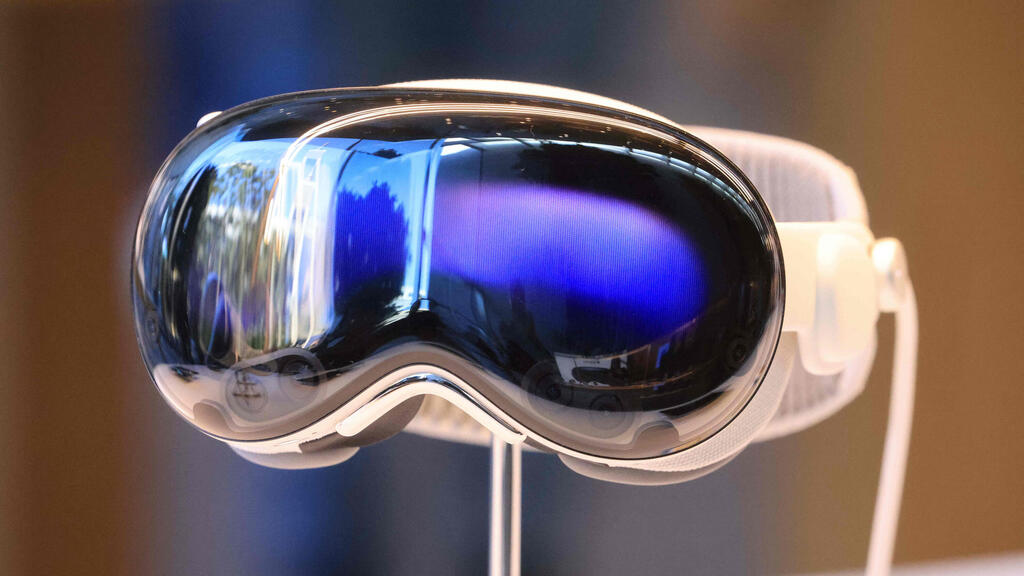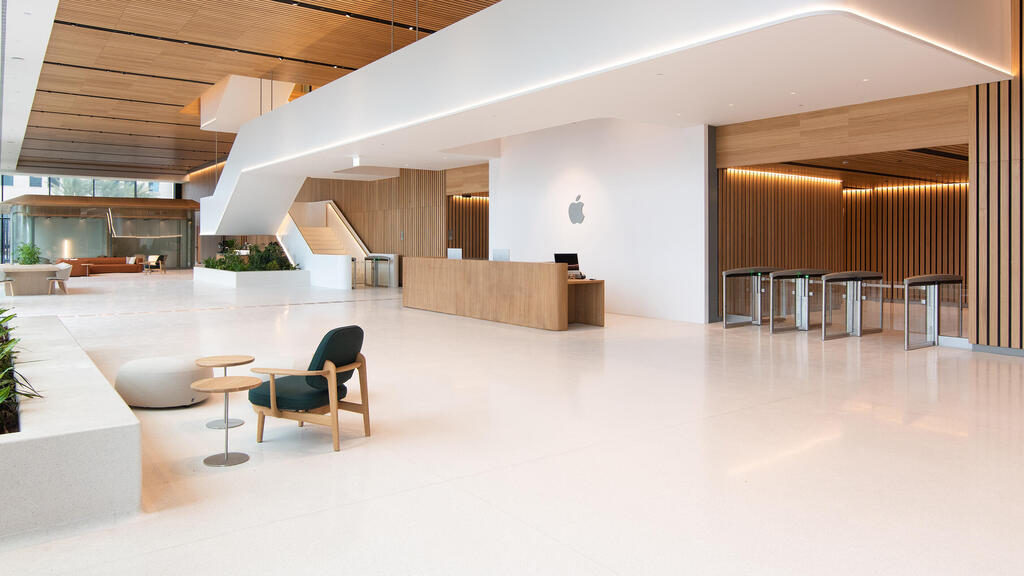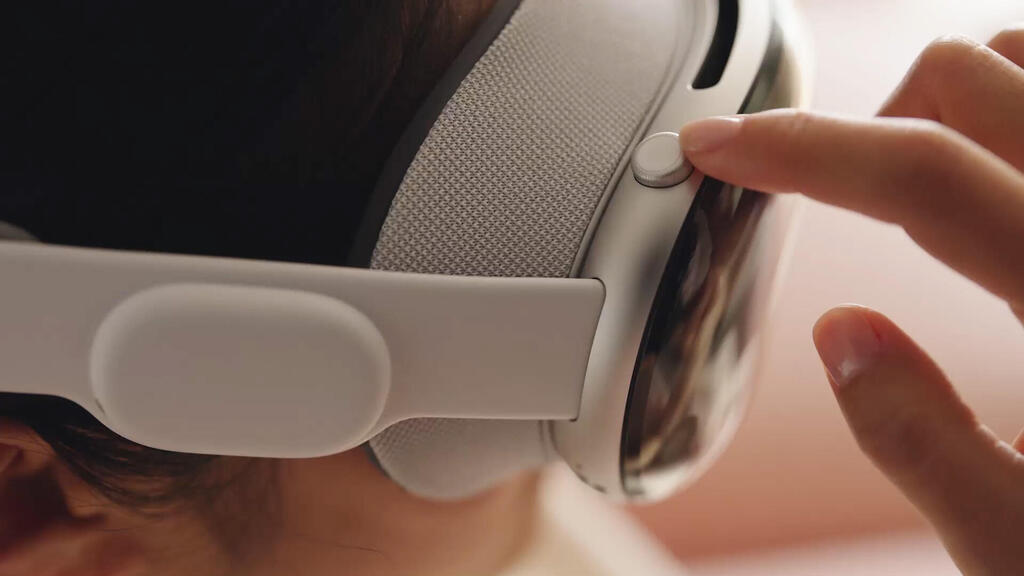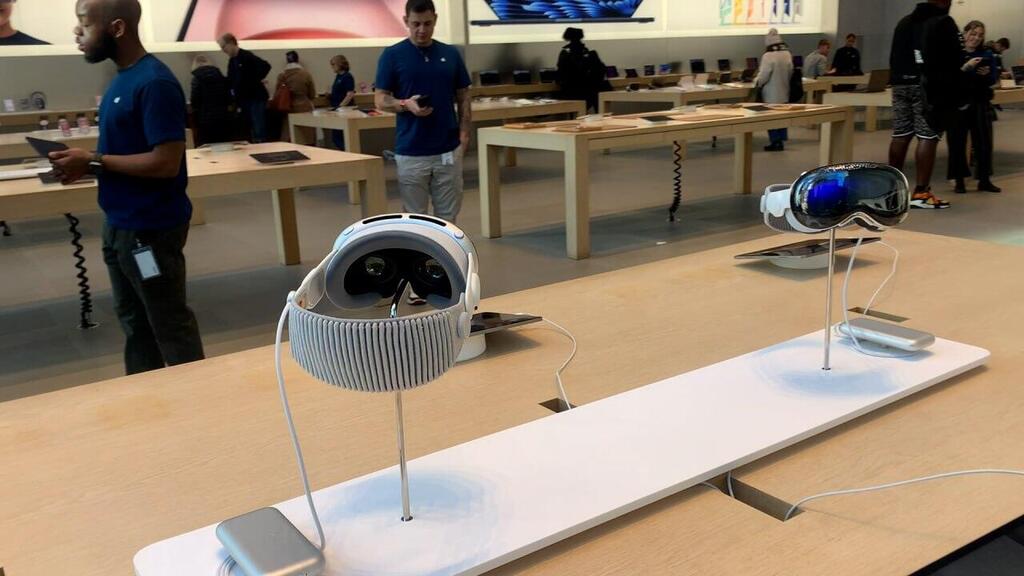Apple’s Vision Pro headset is arguably one of the most advanced consumer electronics products on the market today. And now it turns out that this cutting-edge device includes a significant dose of Israeli innovation.
In an interview, Ronny Friedman, a vice president at Apple and the CEO of Apple Israel, said: “The Vision Pro is one of the most important technological achievements available today, and it wouldn’t be possible without exceptional advances in chips, cameras, sensors and AI-powered algorithms.”
“Our teams in Israel worked alongside colleagues from around the world to develop technologies used in many of Apple’s most advanced and influential products—from the Apple Watch to the MacBook and the Vision Pro itself,” he said.
Friedman is being modest. In a rare public lecture delivered at the ChipEx2025 conference in Tel Aviv, he provided an unusually detailed overview of the Vision Pro’s underlying technologies. “I believe this is the first time Apple has spoken in such depth about the device here in Israel,” Friedman said.
Until now, Apple has disclosed very little about the Vision Pro’s internal systems—certainly not outside of its Cupertino, California headquarters. But Friedman’s talk made clear that many of the device’s systems were either led by or involved Israeli engineering teams.
Cameras that track every glance
Just before Apple releases the next version of its headset, which is rumored to be slimmer and more affordable, now is a good time to revisit what the Vision Pro is. It’s a mixed-reality headset (MR) that combines both virtual reality (VR) and augmented reality (AR), with the entire experience built on high-quality video. The system is operated entirely by eye movements and hand gestures, made possible by a complex setup of cameras, sensors, displays, a dedicated operating system and advanced AI-based algorithms.
Once the headset is on, the user enters a virtual world that often feels as immersive as reality, sometimes up to a full 180 degrees. Floating icons appear in the center of the visual field, similar to an iPhone interface, but in mid-air. You make selections just by looking at them.
The gaze-tracking technology that makes this possible uses a dedicated camera for each eye to track movements with extreme precision. Algorithms then create a 3D model of the eye to analyze the direction of the gaze. These cameras, as you may have guessed, were developed in part by Apple Israel.
They also enable secure user identification through retina scanning, preventing unauthorized access. Household members must use the device in guest mode, which recognizes them as different users.
Cameras, cameras everywhere
The Vision Pro also features external cameras that capture the environment, including forward-facing stereoscopic cameras that support the “passthrough” feature, allowing users to see the real world through the headset. These cameras create a highly realistic sense of the surrounding space. Additional cameras on the side track the user’s hands in real time, no matter their position. The system can detect tiny gestures with sub-millimeter precision. And in low-light settings? The headset activates infrared lighting to continue tracking movements in total darkness.
The Vision Pro also features depth cameras that map the surrounding space, allowing virtual objects to be placed convincingly within the physical environment. This is particularly important in passthrough mode, where real and virtual objects blend. When a dinosaur pops through your living room wall or a teleportation window floats above your bookshelf, you’ll understand the importance of those depth-sensing cameras, also developed in collaboration with Apple Israel.
Stunning displays
The displays inside the Vision Pro are technological marvels in their own right. Each eye sees a screen with 23 million pixels—more than a 4K television. But rendering that many pixels requires significant processing power and battery life. To conserve energy, Apple leveraged the gaze-tracking system: since the headset always knows where you’re looking, it only renders about 20% of the pixels at full resolution.
If you’ve used VR headsets before, you may be familiar with the mild nausea that can occur. It usually happens when the display lags behind head or eye movement. To combat this, the Vision Pro doesn’t wait for complete data before updating the display. Instead, it sends frames instantly—sometimes even before a full frame is ready—resulting in ultra-fast responsiveness that prevents motion sickness in most cases.
All of this is powered by two Apple-designed chips, both developed largely at the company’s Israeli R&D center. The M2 chip handles the heavy lifting: it's packed with cores and supports complex algorithms, a graphics engine, and an AI neural network. The R1 chip processes real-time data from the cameras, sensors, microphones, and displays. These two processors are tightly integrated and coordinated through Apple’s VisionOS.
Apple is doubling down on Israel
It’s no accident that Apple Israel plays a central role in Vision Pro’s development. The local branch continues to grow and now employs roughly 2,500 people. It’s also about to move into a new office building in Herzliya—a clear sign of Apple’s intention to keep expanding in Israel.
Apple’s Israeli R&D center, the second largest outside the U.S., is home to experts in chip development, computer vision, electro-optics, AI, cloud storage technologies, and wireless communications such as Wi-Fi and Bluetooth.
But is it worth the effort?
Given the scale of innovation, one might wonder: was it all for nothing? In Israel, the Vision Pro costs a staggering 15,000 shekels (about $4,000), while its U.S. retail price is $3,500. Early adopters found that aside from watching movies in stunning quality, there wasn’t much else to do with the device. Reports of disappointed customers returning the headset soon followed, along with rumors that Apple might even cancel the project.
But those rumors appear to be unfounded. In his lecture, Friedman said: “The Vision Pro is Apple’s first product in the category of ‘spatial computing,’ and I’m sure we’ll see more products in this category in the future.” It was a strong hint that Apple isn’t backing down.
Get the Ynetnews app on your smartphone: Google Play: https://bit.ly/4eJ37pE | Apple App Store: https://bit.ly/3ZL7iNv
According to industry whispers, the company is planning to launch a new Vision Pro model later this year—or by early next year at the latest. The updated version is expected to be lighter, just as sophisticated, and—crucially—more affordable. Expert predictions put its price between $1,500 and $2,500, not far off from an iPhone.
One version of the rumor even suggests that the new model will be more powerful than the current one, featuring Apple’s new M5 chip, which will enable enhanced AI features, including the next-gen “Apple Intelligence” and an AI-powered Siri.
Not just for entertainment
Despite the advances, Apple’s target audience for the next-generation headset may not be casual home users. According to Bloomberg’s Mark Gurman, Apple plans a more conservative rollout, introducing a model that functions as an accessory for MacBooks.
The concept: Use the headset to display enterprise apps and data from the MacBook on the Vision Pro’s screens. This version would appeal more to engineers, designers, and physicians than to those just looking to observe penguins in 3D.
And that’s not all. The hottest rumor on the horizon is about Apple Glass—a new lightweight AR headset intended to compete with Meta’s successful Ray-Ban smart glasses and Google’s upcoming AR eyewear. Apple CEO Tim Cook has reportedly committed to launching AR glasses before Meta’s “Project Orion,” which suggests a 2026 release might be realistic.
One thing is certain: the future of computing—and Apple’s role in it—looks anything but boring.






